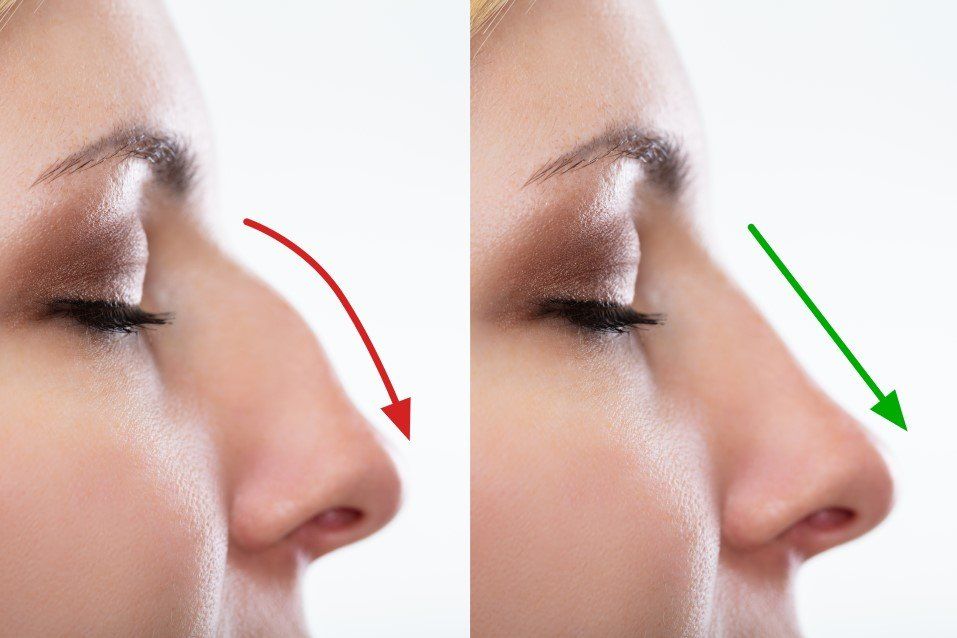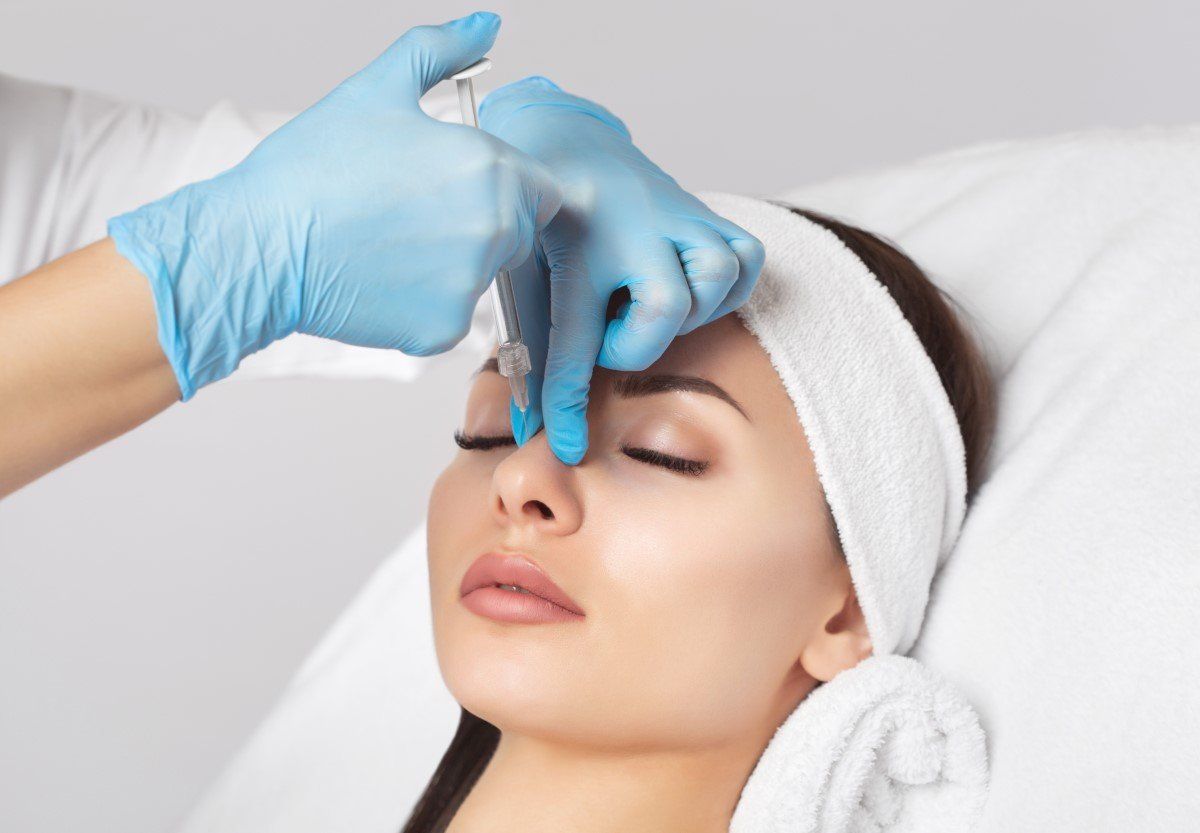Rhinoplasty
What is Rhinoplasty Surgery?
Rhinoplasty is the medical term for nose surgery that can be for purely cosmetic or functional or both. The nose has complex shapes, contours and cartilages, meaning the surgery must be precise and well planned prior to the day of surgery. Rhinoplasty involves the manipulation of the nasal cartilages and bones, often with the addition of cartilages struts and spreader grafts. This leads to improved cosmesis externally and airflow function internally.
There is wide ethnic variation in the shape and contour of the nose and choosing a Surgeon that is appreciative and aware of your ideal facial appearance from that ethnic and cultural background will ensure a predictable natural result. If you are unsure your Rhinoplasty Surgeon appreciates all of your concerns then you should seek a second opinion.
What are the main reasons you have Rhinoplasty Surgery?
Boxy or Round Tip- A Boxy, Round or Bulbous tip can be a major concern because it doesn’t allow the elegance of your nose to be shown. A refined nasal tip can make a subtle but extremely meaningful difference when done correctly.
Wide Nasal Bones - Wide nasal bones can cause the nose to look wide and sometimes flat. These wide bones can make the nose difficult to contour when wearing makeup.
Dorsal Hump (Bump on the Profile)
- A Dorsal Hump (or Bump on the profile of the nose) is one of the most classic reasons a patient seeks out Rhinoplasty Surgery. The elegance a nose can have just from the removal of a dorsal hump is incredible. In men, we like to keep a dominant profile, sometimes even with a high point, that stays masculine with no sign of surgery. In women, we like to feminise the profile but preserve a strong profile that doesn’t cause a “scooped” or “ski-slope” appearance.
Asymmetric Nose - Asymmetric noses can plague photographs and selfies. We commonly get asked about fixing asymmetric features of a nose. When they are dramatically asymmetric, we have techniques that can address this extremely well. But when it is very subtle, we like to remind everyone that no one has a truly symmetric face or nose. If you take the 10 most beautiful people (publicised list at any given time) and compare their computerised symmetric face vs their natural face, the natural face always looks better.
Droopy Tip (Hook Nose) - Droopy tip (or Hook nose) is one of the most common reasons patient's seek out Rhinoplasty Surgery. This can be a concern when at rest or even worse when smiling. This can be seen almost everyday and it can really bother some people. The good news is that there is a relatively simple and extremely safe approach to correcting this. The key is to rotate the nose upwards and prevent the excess pulldown when smiling. Care must be taken to not rotate it too much and cause a “Miss Piggy” effect.
Crooked Nose - A Crooked Nose can plague photographs and selfies. Fixing a crooked nose can be challenging, even for the most talented rhinoplasty surgeons however with specialised techniques we are able to straighten and improve a crooked nose significantly. Appropriately training surgeons utilise a combination of dynamic grafting, septal deviation correcting, upper lateral cartilage correction, and nasal bone repositioning to achieve straightening of the nose. While there is no such thing as a perfectly scientifically straight nose in real life, getting your nose “straighter” is the goal to achieve a contoured look that blends in naturally with the rest of your face.
How has Rhinoplasty Surgery changed?
As part of your initial consultation with Dr John Webster if your concerns also include the appearance of your nose then he will advise that regardless of your specific concern your aim with nose surgery is to have a natural looking nose that is also functional and allows good air passage. Avoid focussing too much on one part of your nose and ask for a natural look that is ethnically appropriate for your face.
Dr John Webster will also explore these important five points with you and encourage you to discuss these also with your Rhinoplasty Surgeon.
- Unnecessary external cuts and scars – modern techniques mean most rhinoplasty can be done with minimal scars.
- Pinched Nasal Tip - when too much cartilage is removed and/or no support is provided causing a collapse of the tip.
- Ski Slope Profile - when too much cartilage and bone is removed from the profile causing a severe scooping of the nose.
- Miss Piggy Nose - when the tip is lifted too much.
- Worsened or Unimproved Breathing – always consider nasal breathing and structural function of the septum, turbinates and nasal valves are addressed in the surgical plan.
Who should do your Rhinoplasty Surgery?
At the Oral Facial & Implant Center our philosophy is exceptional care and Dr John Webster as a Specialist Oral and Maxillofacial Surgeon is solely focused on procedures of the Mouth, Face and Dental Implants. As a facial trauma surgeon Dr John Webster is proficient at laceration repair, nasal fracture management and nasal reconstruction with bone and cartilage grafts and has completed these procedures many hundreds of times.
However, cosmetic rhinoplasty and functional rhinoplasty is a subspecialty of Ear, Nose and Throat (ENT) Surgery. In fact some of the world’s best cosmetic rhinoplasty surgeons limit their practice just to cosmetic rhinoplasty alone.
Dr John Webster will be able to assess your nasal deformity and concerns as all Oral and Maxillofacial Surgeons, ENT Surgeons, Plastic and Cosmetic Surgeons are trained to do so. If you do require Rhinoplasty Surgery as part of achieving your cosmetic goals then he will refer you accordingly to a proficient Rhinoplasty surgeon who would have completed post-fellowship training dedicated to cosmetic rhinoplasty and have multiple examples to show you of before and after outcomes.
In the event you would like to have your facial and nose surgery during the one general anaesthetic then although this is not advised by Dr John Webster, it can be coordinated in most cases depending on surgeon timetables and availability on your desired date of surgery.
Are there non-surgical options to correct your nose?
Yes. Although not a true surgical procedure, many patients have subtle nasal deformities that can be masqueraded or camouflaged with injectable dermal fillers. Dr John Webster has performed non-surgical rhinoplasty many times. For example, by filling a depression on the top of the nose, the nasal bridge can look smoother because the hump is lessened. Subtle asymmetries, tip deformities and tip depression can also be addressed with this method similar to how face and brow lift with dermal fillers can also address mild cosmetic concerns.
However, if your nose is moderate to severe with regard to the level of deformity then it is likely that a single Rhinoplasty Surgery will be the optimum solution for you.
How can you arrange a consultation to discuss your nose deformity surgery?
If you would like to know how we can help you further, or to book a no obligation consultation with Dr John Webster, please phone 07 4580 4733 or alternatively request an appointment now online.
Note: All patients seeking cosmetic surgery must have a referral from their usual GP or if that is not possible, from another general practitioner or specialist medical practitioner. Please note a referral is not required for Non-surgical cosmetic procedures.




